Related Research Articles
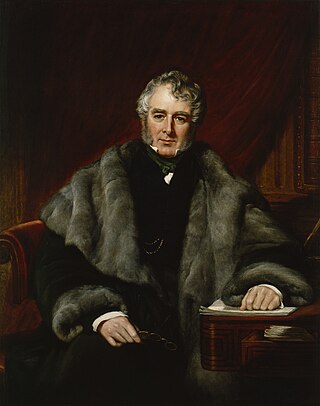
Henry William Lamb, 2nd Viscount Melbourne was a British Whig politician who served as the Home Secretary and twice as the Prime Minister of the United Kingdom.

Lady Caroline Lamb is a 1972 British epic romantic drama film based on the life of Lady Caroline Lamb, novelist, sometime lover of Lord Byron and wife of politician William Lamb, 2nd Viscount Melbourne. The only film written and directed by Robert Bolt, it starred his wife, Sarah Miles, as Lady Caroline, Jon Finch, Richard Chamberlain, Laurence Olivier, Ralph Richardson, John Mills, Margaret Leighton and Michael Wilding.

Lady Caroline Lamb was an Anglo-Irish aristocrat and novelist, best known for Glenarvon, a Gothic novel. In 1812, she had an affair with Lord Byron, whom she described as "mad, bad, and dangerous to know". Her husband was the Honourable William Lamb, who after her death became 2nd Viscount Melbourne and British prime minister.
This article contains information about the literary events and publications of 1816.

The Byronic hero is a variant of the Romantic hero as a type of character, named after the English Romantic poet Lord Byron. Historian and critic Lord Macaulay described the character as "a man proud, moody, cynical, with defiance on his brow, and misery in his heart, a scorner of his kind, implacable in revenge, yet capable of deep and strong affection".
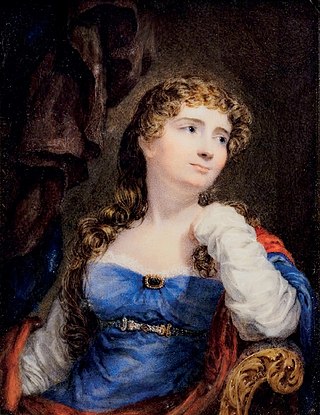
Anne Isabella Noel Byron, 11th Baroness Wentworth and Baroness Byron, nicknamed Annabella and commonly known as Lady Byron, was an educational reformer and philanthropist who established the first industrial school in England, and was an active abolitionist. She married the poet George Gordon Byron, more commonly known as Lord Byron, and separated from him after less than a year, keeping their daughter Ada Lovelace in her custody despite laws at the time giving fathers sole custody of children.
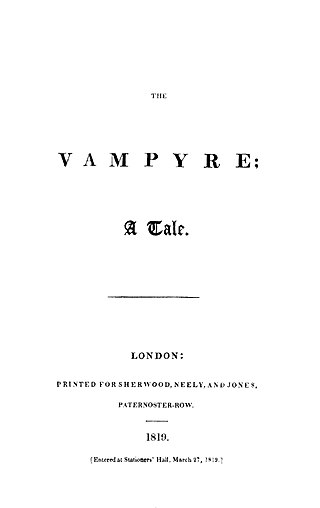
"The Vampyre" is a short work of prose fiction written in 1819 by John William Polidori, taken from the story told by Lord Byron as part of a contest among Polidori, Mary Shelley, Lord Byron, and Percy Shelley. The same contest produced the novel Frankenstein; or, The Modern Prometheus. "The Vampyre" is often viewed as the progenitor of the romantic vampire genre of fantasy fiction. The work is described by Christopher Frayling as "the first story successfully to fuse the disparate elements of vampirism into a coherent literary genre."
Lord Ruthven is a fictional character. First appearing in print in 1819, in John William Polidori's "The Vampyre", he was one of the first vampires in English literature. The name Ruthven was taken from Lady Caroline Lamb's Glenarvon (1816), where it was used as an unflattering parody of Lord Byron, while the character was based on Augustus Darvell from Byron's "Fragment of a Novel" (1819). "The Vampyre" was written privately, and published without Polidori's consent, with revisions to the story made by Polidori for an unpublished second edition showing that he planned to change the name from Ruthven to Strongmore. The initial popularity of "The Vampyre" led to the character appearing in many translations and adaptations, including plays and operas, and Ruthven has continued to appear in modern works. The Lord Ruthven Award (1989–present) by the Lord Ruthven Assembly is named after the character.
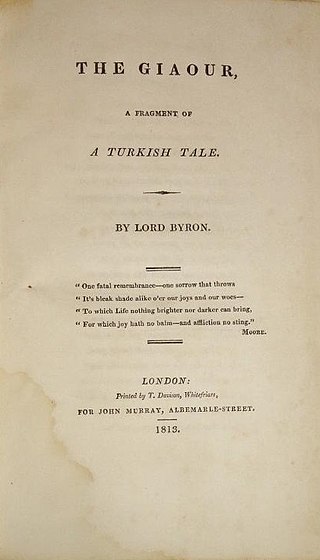
The Giaour is a poem by Lord Byron first published in 1813 by John Murray and printed by Thomas Davison. It was the first in the series of Byron's Oriental romances. The Giaour proved to be a great success when published, consolidating Byron's reputation critically and commercially.

Sarah Sophia Child Villiers, Countess of Jersey, born Lady Sarah Fane, was an English noblewoman and banker, and through her marriage a member of the Villiers family.
Lord Ruthven may refer to:
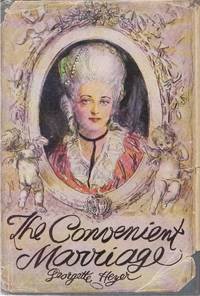
The Convenient Marriage is a Georgian romance novel by Georgette Heyer published in 1934. The novel is set in 1776 and concerns the relationship between Horatia Winwood and Lord Marcus Drelincourt. It is the first of several Heyer romances where the hero and heroine are married early in the novel, and the plot follows their path to mutual love and understanding. Later examples include Friday's Child and April Lady.

George Gordon Byron, 6th Baron Byron, was an English poet and peer. He is one of the major figures of the Romantic movement, and is regarded as being among the greatest of British poets. Among his best-known works are the lengthy narratives Don Juan and Childe Harold's Pilgrimage; many of his shorter lyrics in Hebrew Melodies also became popular.

Jane Elizabeth Harley, Countess of Oxford and Countess Mortimer was an English noblewoman, known as a patron of the Reform movement and a lover of Lord Byron.
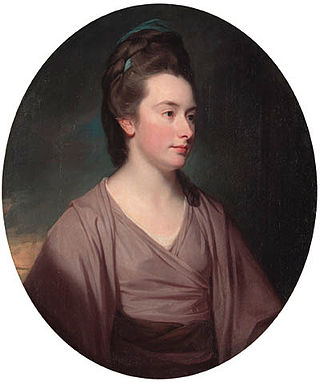
Elizabeth Lamb, Viscountess Melbourne was one of the most influential of the political hostesses of the extended Regency period, and the wife of Whig politician Peniston Lamb, 1st Viscount Melbourne. She was the mother of William Lamb, 2nd Viscount Melbourne, who became Prime Minister of the United Kingdom, and several other influential children. Lady Melbourne was known for her political influence and her friendships and romantic relationships with other members of the English aristocracy, including Georgiana Cavendish, Duchess of Devonshire, Francis Russell, 5th Duke of Bedford, and George, Prince of Wales. Because of her numerous love affairs, the paternity of several of her children is a matter of dispute.

English writer Lord Byron has been mentioned in numerous media. A few examples of his appearances in literature, film, music, television and theatre are listed below.
The Vampire, formally known as The Vampire; or, The Bride of the Isles, is a play written by James Robinson Planché. It was premiered on the London stage in 1820 as the first appearance of the vampire as an image of sophistication and nobility.
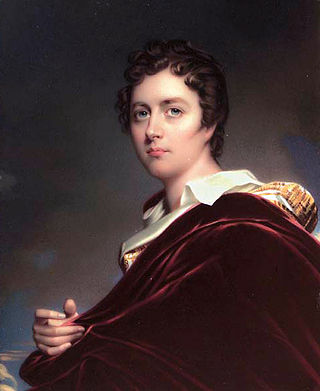
Byron's Memoirs, written between 1818 and 1821 but never published and destroyed soon after his death, recounted at full-length his life, loves and opinions. He gave the manuscript to the poet Thomas Moore, who in turn sold it to John Murray with the intention that it should eventually be published. On Lord Byron's death in 1824, Moore, Murray, John Cam Hobhouse, and other friends who were concerned for his reputation gathered together and burned the original manuscript and the only known copy of it, in what has been called the greatest literary crime in history.

Ada Reis is an 1823 novel by the British writer Lady Caroline Lamb published in three volumes. It was her third novel and was published by John Murray. It was published six months after her previous work Graham Hamilton.

Graham Hamilton is an 1822 two volume novel by the Anglo-Irish writer Lady Caroline Lamb. Her second novel to be published following her 1816 debut Glenarvon, it mocks and attacks the Whig high society in which she had been raised. It was published anonymously by Henry Colburn. Her husband William assisted by proofreading the drafts. Lamb was a noted figure of the Regency era who had caused a scandal with her tempestuous affair with Lord Byron. Her debut novel Glenarvon had been a thinly-disguised depiction of him.
References
- ↑ "Glenarvon". www.litencyc.com.
- ↑ Wright, C. J. "Holland House set (act. 1797–1845)". Oxford Dictionary of National Biography (online ed.). Oxford University Press. doi:10.1093/ref:odnb/93786.(Subscription or UK public library membership required.)
- ↑ "The Holland House Set". 6 January 2011.
- ↑ R Gleckner ed., Romantic Generation (2001) p. 159-61
- ↑ Sutherland, John (2008). Curiosities of Literature. London: Random House. p. 134. ISBN 978-1-905211-97-5.
- ↑ Lamb, Lady Caroline (1866). The Fatal Passion.
- 1 2 3 Lord David Cecil (1965). Melbourne. Pan Books Edition. p. 122.
- ↑ "Caro: The Lady Caroline Lamb Website". sites.google.com.
- ↑ "Queen Victoria's Journals - Information Site". qvj.chadwyck.com. Retrieved 17 January 2023.
- ↑ Barger, Andrew (2011). BlooDeath: The Best Vampire Short Stories 1800–1849. U.S.: Bottletree Books. p. 15. ISBN 978-1-933747-35-4. Archived from the original on 15 August 2017. Retrieved 25 May 2013.
- ↑ G. Heyer, Bath Tangle (London 1974) p. 125
- ↑ G. Heyer, Bath Tangle (London 1974) p. 129